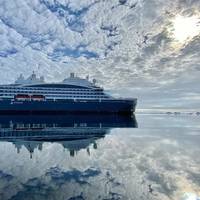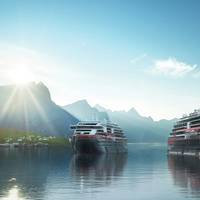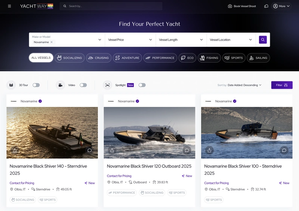Liquefied Natural Gas

Marlink Delivers Connectivity to PONANT Polar Expedition Ship
Marlink is supporting PONANT’s first polar exploration ship Le Commandant Charcot, with data and voice connectivity, aiming to create a seamless communication experience for guests.Le Commandant Charcot became the first vessel of her kind to reach the geographic North Pole on September 6, 2021, during sea trials in preparation for her maiden voyage later this year. Marlink provides a hybrid network solution, combining Sealink dual C- and Ku-band VSAT connectivity, GEO and LEO L-band connectivity and a high-data volume LEO store & forward capability.

Cruise Shipping: 'Green Cruising' with Hurtigruten
Hurtigruten orders third hybrid-powered expedition cruise shipGrowth in the global cruise sector continues, as Hurtigruten, the world’s largest expedition cruise operator, signed an MOU with shipbuilder Kleven Verft AS for the construction of a third hybrid-powered expedition cruise ship. Tom Mulligan, Maritime Reporter’s Science & Technology writer, reports from Norway.“We are thrilled to introduce yet another revolutionary hybrid-powered expedition ship,” enthused Hurtigruten’s CEO, Daniel Skjeldam.

Shipbuilding: Hurtigruten Hybrid Construction Forges Ahead
Norwegian company Hurtigruten, the world’s largest expedition cruise operator, is continuing to push the boundaries when it comes to green travel with its order for three hybrid-powered vessels nearing completion, the first ship being due for delivery in May 2019.Two of these revolutionary ships are currently under construction at the Kleven Yard in Ulsteinvik, Norway, the MS Roald Amundsen and its sister ship, the MS Fritjof Nansen, both of which are custom-designed to cope with some of the most extreme conditions seen on our planet, each having a specially-designed, ice-strengthened hull.
LNG-powered Fjord Line Ferries 'World's Cleanest'
Fjord Line's liquefied natural gas (LNG)-powered newbuildings have claimed a new title as the 'world's cleanest ferries'. The Bergensfjord and Stavangerford have won the respective first and second places on the World Ports Climate Environmental Ship Index (ESI), which measures the emissions of over 3000 ships. The LNG-fuelled ferries are both powered by four Rolls-Royce BV12PG gas engines that drive highly efficient Rolls-Royce PROMAS integrated rudder and propellers. Of the 3194 ships currently on the ESI list, Bergensfjord scored 93.9 points followed by sister vessel Stavangerfjord with 93.5. Only 50 vessels had a score higher than 49.
Maritime Regs: Preparing For Future Emission Requirements
This week, find out why and how choosing ExxonMobil Marine Fuels & Lubricants Mobilgard 410 NC can help optimize the performance of engines that meet Tier IV emission requirements, which continue to be phased in from Jan. 1, 2015, depending on vessel and engine type. Optimize the performance of engines that meet Tier IV emission requirements. The EPA requires that new and medium and high-speed engines must significantly reduce nitrogen oxide (NOx) and diesel particulate matter (PM) emissions within US Caribbean Emission Control Areas (ECAs).
A New Standard in Marine Communications
KVH provides and Harvey Gulf employs possibly the most sophisticated on-board SATCOM and related service package on the water. That’s no accident. If quality service, high tech hardware and quality personnel are the common bonds shared by marine communications provider KVH and its customer Harvey Gulf International Marine, then the relationship is probably a match made in heaven. Harvey Gulf, already a long-time user of the KVH suite of services and equipment, is today converting every vessel in their rapidly expanding 60+ fleet to the latest and greatest equipment standard. From where they sit, that means KVH.

Monitoring System Takes Guesswork Out of Mooring Mega Vessels
Mooring of large vessels in the LNG, petrochemical and container sectors is an intricate and critical procedure. The process entails bringing together a moving object with a static object, and with the imminent advent of even larger vessels (liquefied natural gas tankers with a capacity of 200,000 cubic meters and container ships with a capacity of 22,000 TEU*), the forces involved are enormous. For tankers and bulk carriers, mooring frequently takes place alongside jetties at the end of finger piers…

Washington State Ferries Explores LNG as Fuel
“WSF burns more than 17 million gallons of ultra-low sulfur diesel each year – and it’s our fastest growing operating expense. LNG has the potential to significantly reduce emissions and the cost of fuel,” said Washington State Department of Transportation (WSDOT) Assistant Secretary David Moseley. LNG as a fuel is a promising, but new technology. To ensure that the safety, security and operational challenges of such a move is handled in a responsible manner, Washington State Ferries has partnered with DNV…


